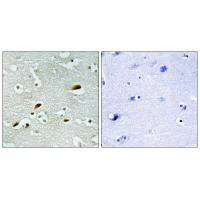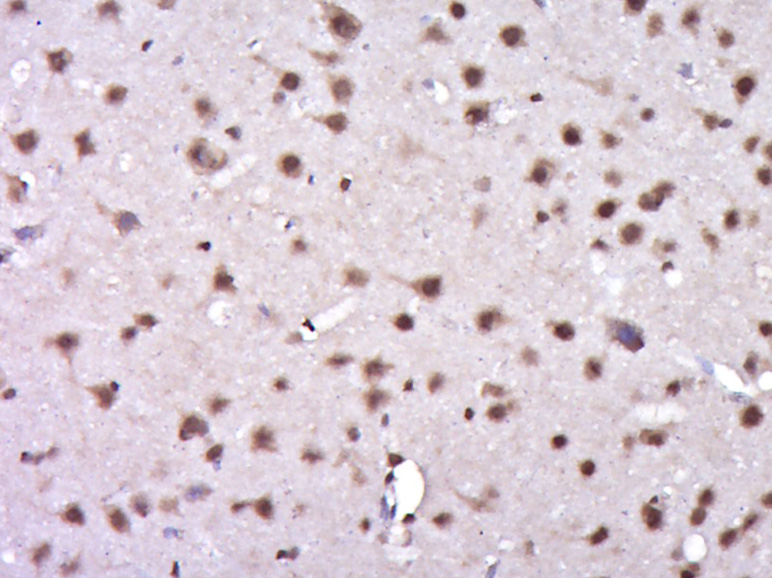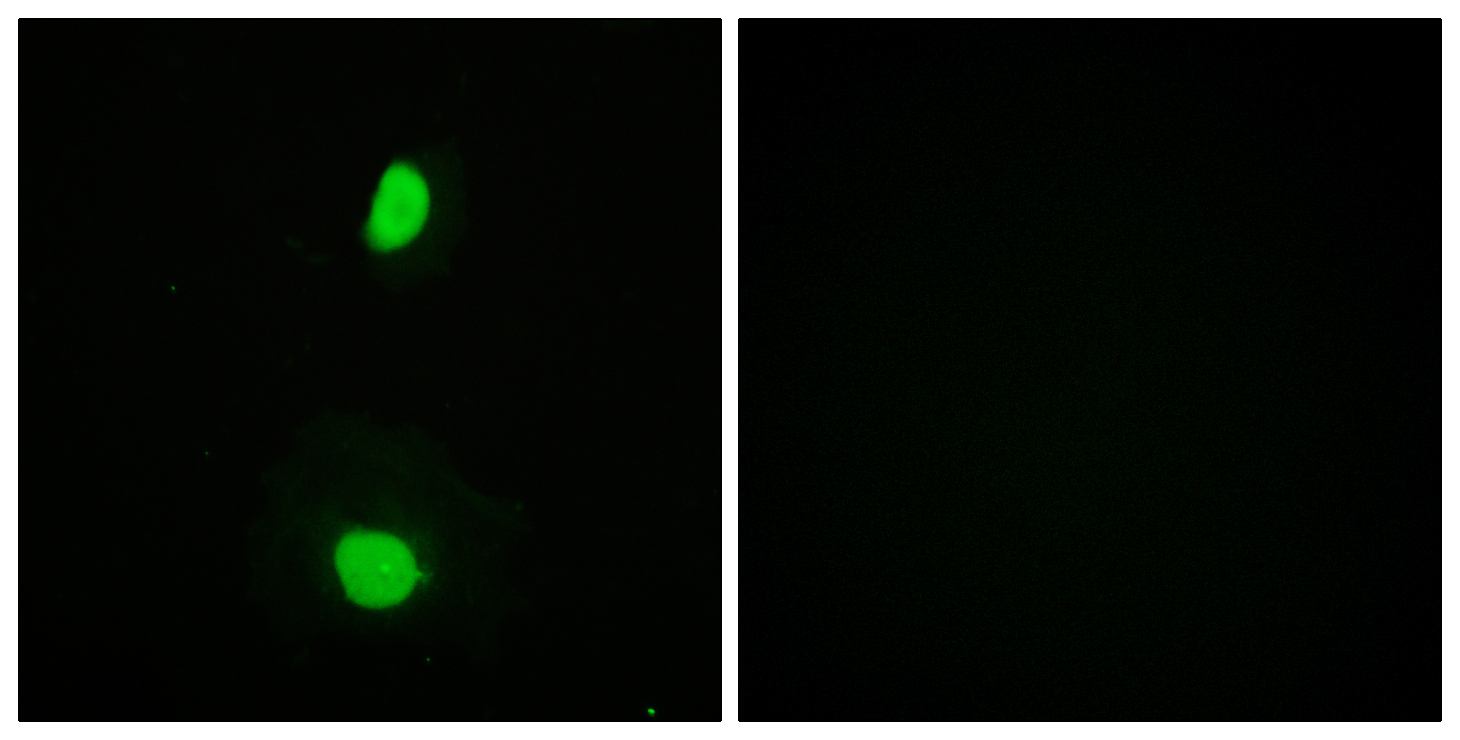
Immunohistochemistry analysis of paraffin-embedded human brain tissue, using TIP60 antibody.
KAT5 Antibody
CSB-PA186227
ApplicationsELISA, ImmunoHistoChemistry
Product group Antibodies
ReactivityHuman, Mouse
TargetKAT5
Overview
- SupplierCusabio
- Product NameKAT5 Antibody
- Delivery Days Customer20
- ApplicationsELISA, ImmunoHistoChemistry
- CertificationResearch Use Only
- ClonalityPolyclonal
- ConjugateUnconjugated
- Gene ID10524
- Target nameKAT5
- Target descriptionlysine acetyltransferase 5
- Target synonymsESA1, HTATIP, HTATIP1, NEDFASB, PLIP, TIP, TIP60, ZC2HC5, cPLA2, histone acetyltransferase KAT5, 60 kDa Tat-interactive protein, HIV-1 Tat interactive protein, 60kDa, K(lysine) acetyltransferase 5, K-acetyltransferase 5, Tat interacting protein, 60kDa, cPLA(2)-interacting protein, cPLA2 interacting protein, histone acetyltransferase HTATIP, protein 2-hydroxyisobutyryltransferase KAT5, protein acetyltransferase KAT5, protein crotonyltransferase KAT5, protein lactyltransferase KAT5
- HostRabbit
- IsotypeIgG
- Protein IDQ92993
- Protein NameHistone acetyltransferase KAT5
- Scientific DescriptionCatalytic subunit of the NuA4 histone acetyltransferase complex which is involved in transcriptional activation of select genes principally by acetylation of nucleosomal histones H4 and H2A. This modification may both alter nucleosome-DNA interactions and promote interaction of the modified histones with other proteins which positively regulate transcription. This complex may be required for the activation of transcriptional programs associated with oncogene and proto-oncogene mediated growth induction, tumor suppressor mediated growth arrest and replicative senescence, apoptosis, and DNA repair. NuA4 may also play a direct role in DNA repair when recruited to sites of DNA damage. Directly acetylates and activates ATM. Component of a SWR1-like complex that specifically mediates the removal of histone H2A.Z/H2AFZ from the nucleosome. In case of HIV-1 infection, interaction with the viral Tat protein leads to KAT5 polyubiquitination and targets it to degradation. Relieves NR1D2-mediated inhibition of APOC3 expression by acetylating NR1D2. Kamine J., Virology 216:357-366(1996). Sheridan A.M., Mol. Cell. Biol. 21:4470-4481(2001). Legube G., Gene 310:161-168(2003).
- ReactivityHuman, Mouse
- Storage Instruction-20°C or -80°C
- UNSPSC41116161






